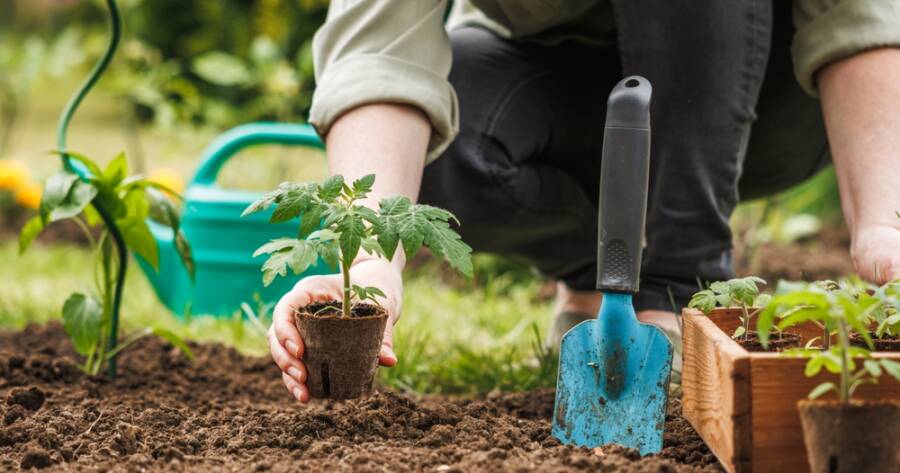As the frost begins to melt and the days grow longer, many gardeners feel the urge to get their hands back into the soil. Spring offers the perfect opportunity to revitalize a garden that may have gone dormant or incurred damage during the winter months. With thoughtful planning and careful attention, gardens can potentially blossom with renewed vigor and beauty. Understand some tips that could help breathe life back into your garden.
Assessing Winter Damage
Before diving into new planting, it’s important to assess the condition of your garden post-winter. Walk around your garden and observe any visible damage to plants, soil erosion, or structural issues in garden beds.
Check for broken branches and frostbitten plants, which may need pruning or removal. Early assessment can guide your action plan, helping to prioritize tasks and allocate resources efficiently.
Soil Assessment and Restoration
Healthy soil is the foundation of a thriving garden. After winter, soil may be compacted and nutrient-depleted. Conducting a soil test can offer insights into pH levels and nutrient content, allowing for informed decisions on amendments.
Adding organic matter such as compost or well-aged manure might improve soil structure and fertility. It could also help aerate the soil, enhancing the root growth of upcoming plants.
Pruning for New Growth
Pruning encourages healthy growth and removes any diseased or damaged wood. Timing and technique are crucial—late winter or early spring pruning may be beneficial for certain shrubs and trees.
Always use sharp, clean tools to make precise cuts, and be mindful not to prune plants that bloom in spring, as this could lead to fewer flowers. By removing the dead or unwanted growth, plants might have better access to sunlight and air circulation, which could promote vigorous development.
Preparing Planting Beds
Well-prepared planting beds are essential for a successful growing season. Begin by cleaning up debris, dried leaves, and old mulch that may harbor pests or diseases. Lightly tilling the soil can help break up clumps and incorporate organic material.
Raised beds might need additional soil or nutrients to maintain optimal conditions. Proper preparation lays the groundwork for healthy future plantings, potentially enhancing growth and yield.
Selecting Suitable Plants
Choosing the right plants can be vital for a successful garden revival. Consider the specific needs and conditions of your garden, such as sunlight, soil type, and climate zone.
Select varieties that are well-suited to local conditions and be mindful of bloom times to ensure sequential flowering. Native plants might be particularly advantageous, as they normally require less maintenance and are more resistant to local pests and diseases.
Watering Techniques and Irrigation
Watering is crucial as new growth emerges, but balancing moisture is key. Overwatering or underwatering could both be harmful, so check soil moisture levels regularly.
Employ techniques such as drip irrigation or soaker hoses to provide consistent watering directly to plant roots, reducing evaporation and ensuring efficient use of water.
Incorporating Mulching for Protection and Growth
Applying a fresh layer of mulch can greatly benefit a rejuvenating spring garden. Mulch helps regulate soil temperature, retain essential moisture, and suppress weed growth, creating a more stable environment for plants to thrive.
Organic options such as shredded bark, leaves, or straw also enrich the soil as they decompose, contributing valuable nutrients over time. When spreading mulch, keep it a few inches away from plant stems to prevent rot and encourage healthy airflow around the base of each plant.
Encouraging Biodiversity
A garden teeming with life can lead to better resilience against pests and diseases. Consider planting a variety of flowers, herbs, and shrubs that attract beneficial insects, birds, and pollinators.
Encourage biodiversity by providing habitats and water sources for wildlife. Mixed plantings may enhance the ecological balance within the garden, fostering a healthier ecosystem overall.
Monitoring and Adapting
Ongoing vigilance is essential for a thriving garden. Regular checks for signs of pests, diseases, or nutritional deficiencies might allow for timely interventions.
Adjust plans and methods as needed, considering factors such as changing weather patterns or specific plant responses. By remaining flexible and responsive, gardeners may navigate challenges with greater ease, ensuring ongoing vitality through the growing season.
Revive Your Garden the Holistic Way!
Reviving a garden after winter can be a fulfilling and potentially rewarding endeavor. With thoughtful assessment, careful nurturing, and a focus on ecological balance, it’s possible to coax your garden back to life.
Changeable and evolving, the process encourages growth, not only within the garden but in the gardener’s knowledge and appreciation. By fostering both the land and the connections within it, a beautiful and enduring sanctuary often emerges.




